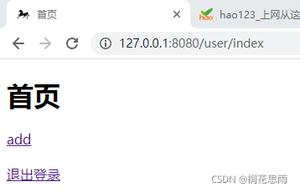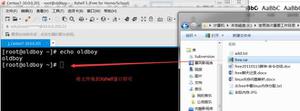python -ConfigParser模块讲解

configParser 模块用于操作配置文件
注:Parser汉译为“解析”之意。
配置文件的格式与windows ini文件类似,可以包含一个或多个节(section),每个节可以有多个参数(键=值)。
为了更好的理解本文,我们先了解一下配置文件的组成及命名:配置文件(INI文件)由节(section)、键、值组成。
样例配置文件example.ini
[plain] view plain copy
- [book]
- title:ConfigParser模块教程
- time:2012-09-20 22:04:55
- [size]
- size:1024
- [other]
- blog:csdn.net
上面配置文件中用的是冒号,也可以用等号。
example.py代码
[python] view plain copy
- # -*- coding: utf-8 -*-
- import ConfigParser
- import string
- config=ConfigParser.ConfigParser()
- config.read(u'd:/百度网盘/android/Python/python_example/sample.ini')
- print string.upper(config.get("book","title")),
- print "by",config.get("book","author"),
- print "("+config.get("book","email")+")"
- print config.get("size","size")
- print config.sections()
- for section in config.sections():
- print section
- for option in config.options(section):
- print " ",option,"=",config.get(section,option)
example.py执行结果
[plain] view plain copy
- C:\Documents and Settings\Administrator>tmp.py
- CONFIGPARSER模块教程 by 大头爸爸 (366500050@qq.com)
- 1024
- ['book', 'size', 'other']
- book
- title = ConfigParser模块教程
- author = 大头爸爸
- email = 366500050@qq.com
- time = 2012-09-20 22:04:55
- size
- size = 1024
- other
- blog = csdn.net
写配置文件实例
[python] view plain copy
- import ConfigParser
- import sys
- config=ConfigParser.ConfigParser()
- config.add_section("book")
- config.set("book","title","这是标题")
- config.set("book","author","大头爸爸")
- config.add_section("size")
- config.set("size","size",1024)
- config.write(sys.stdout)
执行结果
[plain] view plain copy
- [book]
- title = 这是标题
- author = 大头爸爸
- [size]
- size = 1024
ConfigParser方法
[plain] view plain copy
- 1、config=ConfigParser.ConfigParser()
- 创建ConfigParser实例
- 2、config.sections()
- 返回配置文件中节序列
- 3、config.options(section)
- 返回某个项目中的所有键的序列
- 4、config.get(section,option)
- 返回section节中,option的键值
- 5、config.add_section(str)
- 添加一个配置文件节点(str)
- 6、config.set(section,option,val)
- 设置section节点中,键名为option的值(val)
- 7、config.read(filename)
- 读取配置文件
- 8、config.write(obj_file)
- 写入配置文件
综合实例
[python] view plain copy
- #coding=utf-8
- import ConfigParser
- def writeConfig(filename):
- config = ConfigParser.ConfigParser()
- # set db
- section_name = 'db'
- config.add_section( section_name )
- config.set( section_name, 'dbname', 'MySQL')
- config.set( section_name, 'host', '127.0.0.1')
- config.set( section_name, 'port', '80')
- config.set( section_name, 'password', '123456')
- config.set( section_name, 'databasename', 'test')
- # set app
- section_name = 'app'
- config.add_section( section_name )
- config.set( section_name, 'loggerapp', '192.168.20.2')
- config.set( section_name, 'reportapp', '192.168.20.3')
- # write to file
- config.write( open(filename, 'a') )
- def updateConfig(filename, section, **keyv):
- config = ConfigParser.ConfigParser()
- config.read(filename)
- print config.sections()
- for section in config.sections():
- print "[",section,"]"
- items = config.items(section)
- for item in items:
- print "\t",item[0]," = ",item[1]
- print config.has_option("dbname", "MySQL")
- print config.set("db", "dbname", "11")
- print "..............."
- for key in keyv:
- print "\t",key," = ", keyv[key]
- config.write( open(filename, 'r+') )
- if __name__ == '__main__':
- file_name = 'test.ini'
- writeConfig(file_name)
- updateConfig(file_name, 'app', reportapp = '192.168.100.100')
- print "end__"
以上是 python -ConfigParser模块讲解 的全部内容, 来源链接: utcz.com/z/387426.html







